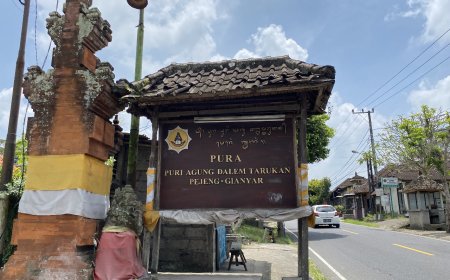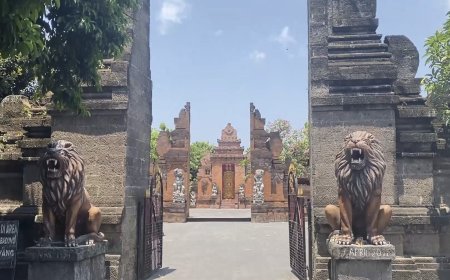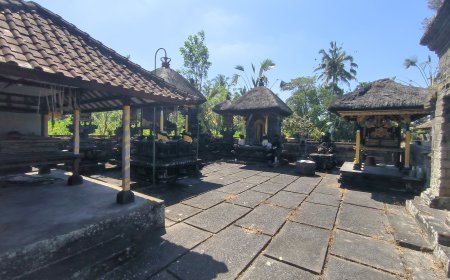Penataran Pande Tamblingan Temple: The Center of Weapon Making in the Ancient Balinese Period
Penataran Pande Tamblingan Temple, located in Munduk Village, Bali, is one of the island's prominent historical cultural sites. The temple commemorates a group of ancient Balinese blacksmiths, called Pande, who had an important role in the manufacture of weapons and war tools. Located on the shores of beautiful Lake Tamblingan, the temple also illustrates the richness of Balinese culture with its distinctive architecture, including the multi-layered meru roof. Despite its past destruction by the Majapahit army, Pura Pande Tamblingan is still a silent witness to Bali's history and a quiet and cool place of worship for the pandes or blacksmiths who played an important role in Balinese society.

Bali is an island known for its natural beauty and rich culture. One of the interesting aspects of Balinese culture is the temple, which is a Hindu place of worship. Bali has thousands of temples scattered in various regions, ranging from large temples that become tourist icons, to small temples that become sacred places for the local community. One of the temples that has high historical, cultural and religious value is Penataran Pande Tamblingan Temple.
Pande is a group of blacksmiths who have expertise in making weapons and war tools. They received special treatment from the Balinese kings because their expertise was vital to the defense of the kingdom. Ancient inscriptions show evidence of the Pande's existence in various parts of Bali, including Tamblingan, which was a center of weapon making.
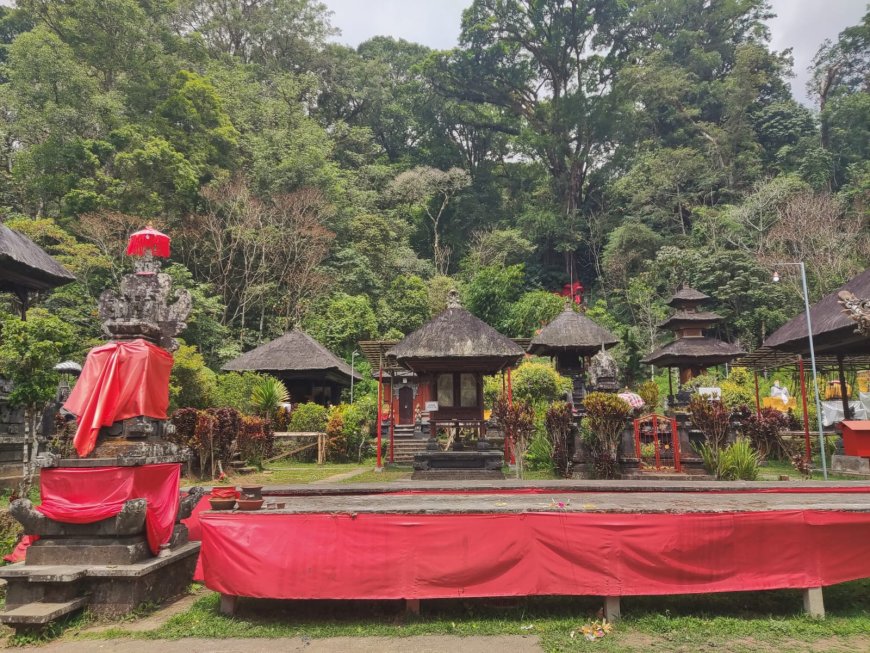
Penataran Pande Tamblingan Temple (Photo Source: Private Collection)
Pande Tamblingan Temple is a temple located in Munduk Village, Banjar District, Buleleng Regency. This temple was established as a form of srada bhakti or respect and devotion to God Almighty in its manifestation as Hyang Pasupati, the patron god of pande or blacksmiths. The temple is located on the shores of Lake Tamblingan, one of Bali's beautiful twin lakes, and has typical Balinese architecture with a multi-layered roof called meru. In the temple grounds, there are some pre-historic relics and statues depicting figures in Hindu mythology.
However, the Tamblingan region suffered destruction by the Majapahit army under the leadership of Arya Cengceng. The surviving Tamblingan pandes were forced to flee and hide the inscriptions and other memande furniture. An attempt to repatriate them by the king of Bali also failed, and eventually, the Pande Tamblingan community never returned to the Tamblingan area. Their descendants hid their Pande identity, and many of them blended in with the Pande community that came to Bali after the fall of Majapahit. This became one of the dark chapters in the history of the Tamblingan Pande community, which was known for its expertise in weapons and war equipment.
Talking about Penataran Pande Tamblingan Temple, formerly known as Catur Lepus Temple, cannot be separated from the discovery of the Tamblingan Site which began with the discovery of a copper inscription plate by Pan Niki (Wanagiri Village resident) in 1997. The inscription dated 1306 Isaka, hereinafter referred to as the Tamblingan Inscription, contains an order from the regional ruler at that time to the Pande Besi residents in Tamblingan who had long left their village, to immediately return to Tamblingan to work as usual as before. The inscription is still neatly stored in Pamulungan Agung Temple, Gobleg Village, Banjar District, Buleleng Regency, and is made of copper plates where both sides contain inlays of Old Javanese script and language.
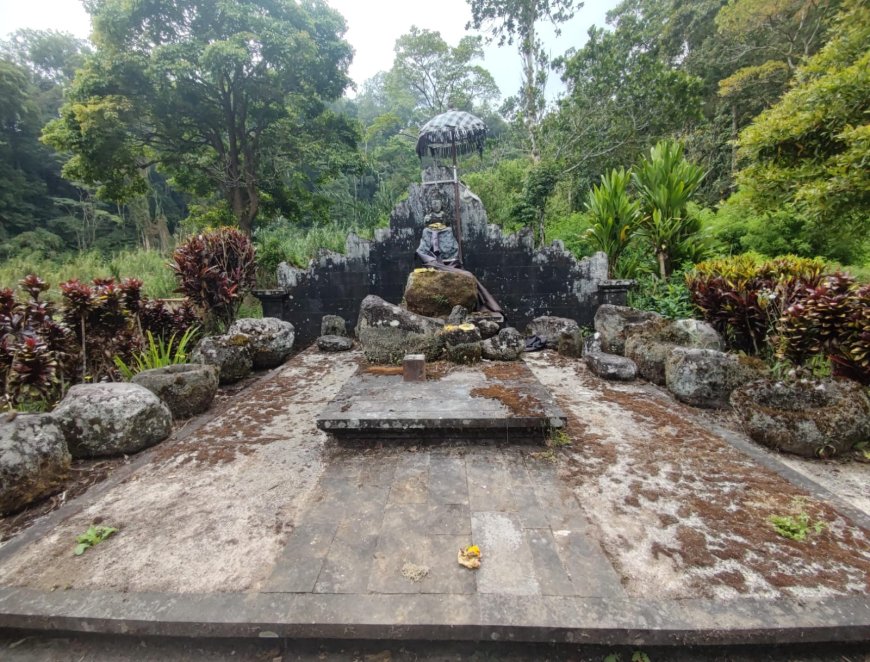
Ancient Site of Memande furniture (Photo Source: Private Collection)
This temple was built in 2007 and the discovery of memande furniture in this temple is estimated to have existed since the ancient Balinese royal dynasty. The site of an ancient metal workshop (Perapen) near the temple shows that there were once activities of making metal weapons and tools for royal purposes. The metal artifacts found, such as knives, swords, and others, show the high skill of the pande in processing metal in this Tamblingan area.
Penataran Pande Tamblingan Temple is a place of worship for pandes or blacksmiths who play an important role in Balinese social and cultural life. The architecture of this temple reflects the richness of Balinese culture with three main parts, namely Nista Mandala, Madya Mandala, and Utama Mandala. The temple has beautiful natural scenery with the backdrop of Lake Tamblingan and Mount Lesung, and offers a calm and cool atmosphere.
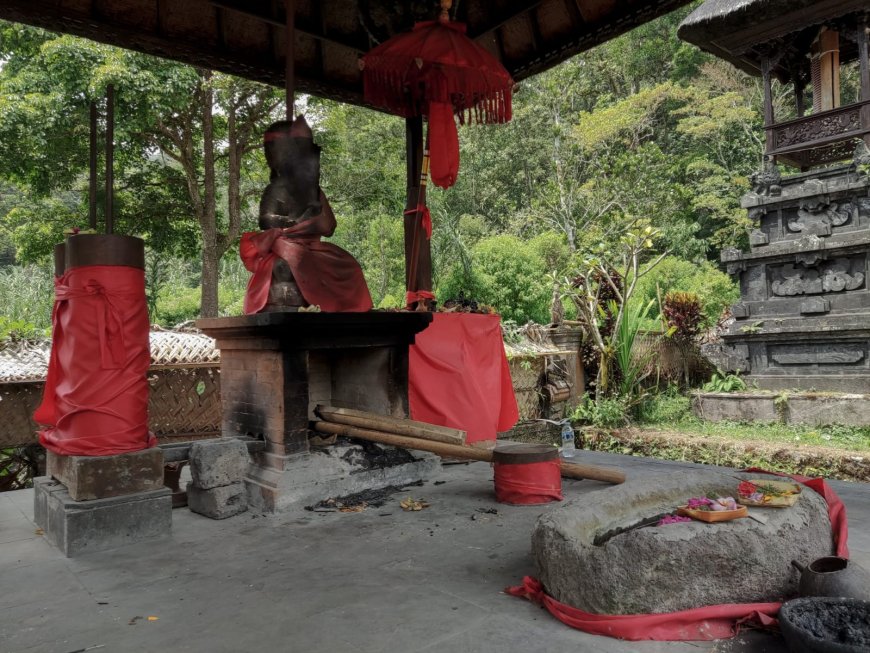
Perapen at Penataran Pande Tamblingan Temple (Photo Source: Private Collection)
There is a Perapen or iron workshop in this temple, Perapen is a building used as a place to carry out activities, especially doing work processing metal materials that produce items of artistic value such as krises, knives and others. Prapen is also seen as a sacred place because in it there is a pelinggih which is believed to be a place to worship the god Brahma, that's why there is a statue of the god Brahma.
Behind the Penataran Pande Tamblingan temple there is also a temple that is sacred because Ida Bhatara Linggir resides here, it is said that this is where the ancestors of Pande Tamblingan asked for taksu for the weapons they had made. To reach this temple we have to walk down the stairs behind the temple. In this temple there are two tiger statues that will welcome us when we enter this temple, there is also a statue of Ida Bhatara Linggir and a large tree wearing red wastra.
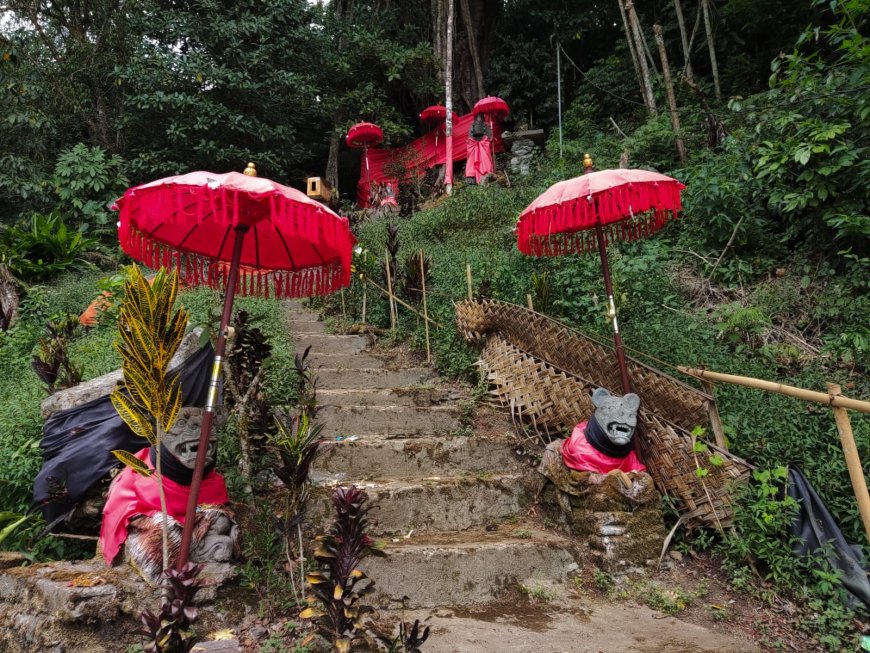
Pelinggih Ida Bhatara Lingsir (Photo Source: Private Collection)
Pande Tamblingan Temple is a silent witness to the development of Bali and the center of religious and social activities of the Pande community. Although there is no exact record of who built it, this temple remains an integral part of Balinese history and culture that should be preserved and explored by tourists who want to experience the beauty and richness of this island. The temple has a beautiful natural scenery with the backdrop of Lake Tamblingan and Mount Lesung. The temple also offers a calm and cool atmosphere with fresh mountain air. This temple is suitable for tourists who want to enjoy the beauty and richness of Balinese culture.
Pande Tamblingan is located in Munduk Village, Banjar District, Buleleng Regency, Bali. To reach this temple, worshipers must travel about 70 kilometers from Denpasar City, or about 2 hours drive. Pemedek must also pass through a winding path between forest trees, plantations and Tamblingan lake. Visitors will be greeted by the sight of the magnificent and charming temple, which stands on a large and flat land. Visitors can also enjoy the beauty of Tamblingan Lake in front of the temple.



















































